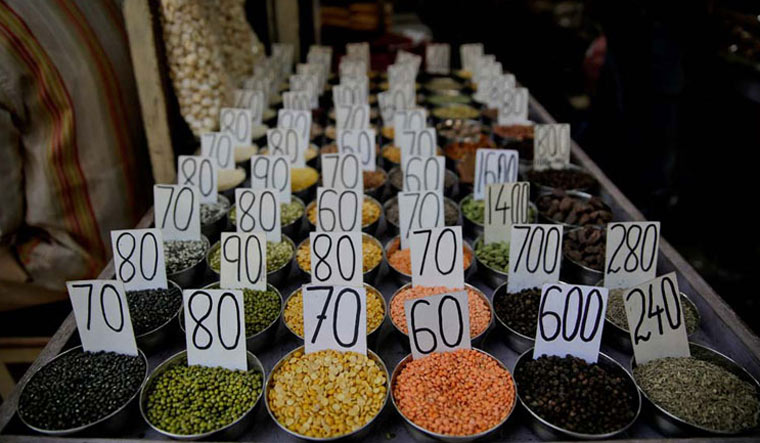Retail inflation fell to a five-month low of 4.35 per cent in September from 7.27 per cent in the year-ago period as prices of vegetables and other items declined, according to government data released on Tuesday.
The moderation in Consumer Price Index-based inflation is in line with the assessment of Reserve Bank Governor Shaktikanta Das who recently projected substantial softening of retail inflation.
The CPI inflation was at 5.3 per cent in August and at 7.27 per cent in September 2020.
Previously, the CPI was low at 4.23 per cent in April 2021.
As per the data released by the National Statistical Office (NSO), the inflation in food segment eased to 0.68 per cent in September, significantly down from 3.11 per cent in the preceding month.
The data showed that inflation in the vegetables basket contracted 22.47 per cent in September compared to a decline of 11.68 per cent in August. The rate of price rise was also lower in fruits, eggs, meat and fish, and pulses and products segments.
However, the inflation was higher in the case of fuel and light at 13.63 per cent in September compared to 12.95 per cent in August.
Aditi Nayar, Chief Economist at Icra, said while the extent of the fall in the year-on-year CPI inflation to 4.35 per cent in September 2021 from 5.3 per cent in the previous month is considerable, and higher than Icra's forecast, it has been driven primarily by food items, and to a small extent, housing.
A high base is expected to temporarily dampen the CPI inflation for October-November 2021 to below 4 per cent before an upturn resumes in the remainder of this fiscal, she added.
"In our view, the MPC (Monetary Policy Committee) will choose to continue to ignore supply side risks to inflation, especially if they emanate from a global surge in commodity prices, on which monetary policy has little impact, and change the stance only after a durable domestic demand revival emboldens producers to raise prices," Nayar said.
Sreejith Balasubramanian, Economist, Fund Management at IDFC AMC, said the main driver of the latest print is softer food and beverage prices while core inflation continued to be at 5.8 per cent.
Commodity price, particularly of crude oil, and its partially offsetting impact on inflation and consumption demand at a time when the economy's aggregate demand is still below the pre-pandemic level will also be crucial, Balasubramanian added.
The Reserve Bank of India (RBI), which mainly factors in CPI-based inflation while arriving at its bi-monthly monetary policy, has been tasked by the government to keep it at 4 per cent, with a tolerance band of 2 per cent on either side.
In his statement after the meeting of the rate-setting panel, Das, last week, said that overall, the CPI headline momentum is moderating which, combined with favourable base effects in the coming months, could bring about a substantial softening in inflation in the near term.
The RBI has projected the CPI inflation at 5.3 per cent for 2021-22: 5.1 per cent in second quarter, 4.5 per cent in third; 5.8 per cent in last quarter of the fiscal, with risks broadly balanced.
The retail inflation for April-June period of 2022-23 is projected at 5.2 per cent.
Das had also said RBI was watchful of the evolving inflation situation and remain committed to bring it closer to the target in a gradual and non-disruptive manner.





